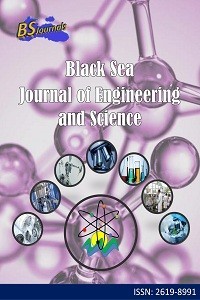Modeling of Individual Growth Curves in Japanese Quails
Modeling of Individual Growth Curves in Japanese Quails
Japanese quail, growth curve, Models,
___
- Aggrey SE. 2002. Comparison of three nonlinear and spline regression models for describing chicken growth curves. Poultry Science, 81: 1782-1788.
- Akbaş Y, Oğuz I. 1998. Growth curve parameters of lines of Japanese quail (Coturnix coturnix japonica), unselected and selected for four-week body weight. Arch. Geflügelk, 62(3): 104-109.
- Alkan S, Mendeş M, Karabağ K, Balcıoğlu MS. 2009. Effects short term divergent selection of 5-week body weight on growth characteristics in Japanese quail. Arch Geflugelkd. 73: 124–131.
- Anthony NB, Nestor KE, Bacon WL. 1986. Growth curves of Japanese quail as modified by divergent selection for 4-week body weight. Poultry Science, 65: 1825-1833.
- Balcıoğlu MS, Kızılkaya K, Yolcu HI, Karabağ K. 2005. Analysis of growth characteristics in short-term divergently selected Japanese quail. S Afr J Anim Sci, 35: 83–89.
- Beiki H, Pakdel A, Moradi-shahrbabak M, Mehrban H. 2013. Evaluation of growth functions on Japanese quail lines. J Poult Sci. 50: 20–27.
- Bilgin OC, Esenbuğa N. 2003. Parameter estimation in nonlinear growth models. Anim. Prod, 44(2): 81-90.
- Hyankova L, Knizetova H, Dedkova L, Hort J. 2001. Divergent selection shape of growth curve in Japanese quail 1. responses in growth parameters and food conversion. Br. Poultry Sci, 42: 583-589.
- Narinç D, Aksoy T, Karaman E. 2010. Genetic parameters of growth curve parameters and weekly body weights in Japanese quails (Coturnix coturnix japonica). J Anim Vet Adv, 9: 501–507.
- Narinç D, Aksoy T, Karaman E, Karabağ K. 2009. Effect of selection applied in the direction of high live weight on growth parameters in Japanese quail. Mediterr Agric Sci, 22: 149–156.
- Önder H, Boz MA, Sarıca M, Abacı SH, Yamak US. 2017. Comparison of growth curve models in Turkish native geese, Europ Poult Sci, 81: 1-8.
- Soysal MI, Tuna YT, Gürcan EK, Özkan E. 1999. A Study on the comparison of various linear and nonlinear growth curves in Japanese quails (Coturnix coturnix japonica). Livestock Res Jour, 9(1-2): 40-44.
- Talpaz H, De La Torre JR, Sharpe PJH, Hurwitz S. 1986. Dynamic optimization model for feeding of broilers. Agric Sys, 20: 121-132.
- Üçkardeş F, Korkmaz M, Ocal P. 2013. Comparison of models and estimation of missing parameters of some mathematical models related to in situ dry matter degradation. J Anim Plant Sci, 23: 999–1007.
- Üçkardeş F, Narinç D. 2014. An application of modified Logistic and Gompertz growth models in Japanese quail. Indian J Anim Sci, 84: 903–907.
- Yayın Aralığı: 6
- Başlangıç: 2018
- Yayıncı: Uğur ŞEN
Contrast Analysis on Single Factorial Studies and Solution with SPSS
Demet ÇANGA, Aysel YENİPINAR, Ömer Faruk KARAOKUR, Ayşe Betül ÖNEM, Ercan EFE
DETERMINING SAMPLE SIZE IN LOGISTIC REGRESSION WITH G-POWER
Aysel YENİPINAR, Şeyma KOÇ, Demet ÇANGA, Fahrettin KAYA
Evaluation of Some Body Dimensions with Cronbach Alpha Coefficient in Saanen Kids
Modeling of Individual Growth Curves in Japanese Quails
Esra YAVUZ, Ayşe Betül ÖNEM, Fahrettin KAYA, Demet ÇANGA, Mustafa ŞAHİN
The Present of Scrapie and the Result of Breeding Program in Europe and Cyprus
Meryem BETMEZOĞLU, Dilek ARSOY
A STUDY ON DETERMINATION OF OUTLIER OBSERVATIONS BY USING CHI-SQUARE THRESHOLD VALUE
Fahrettin KAYA, Esra YAVUZ, Şeyma KOÇ, Ömer Faruk KARAOKUR
Comparison of Commonly Used Statistics Package Programs
Ömer Faruk KARAOKUR, Fahrettin KAYA, Esra YAVUZ, Aysel YENİPINAR
